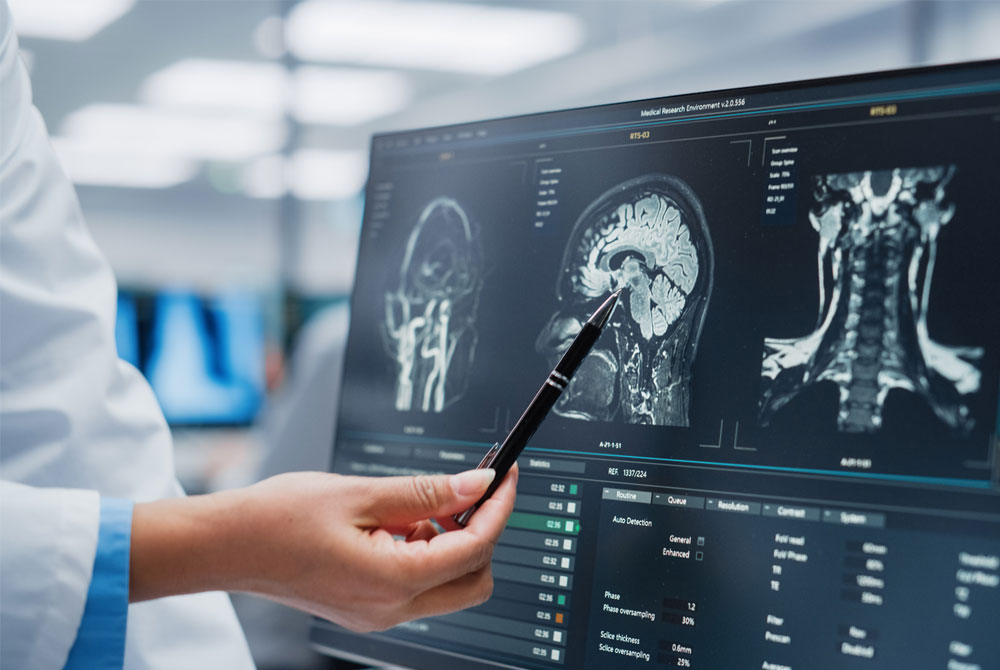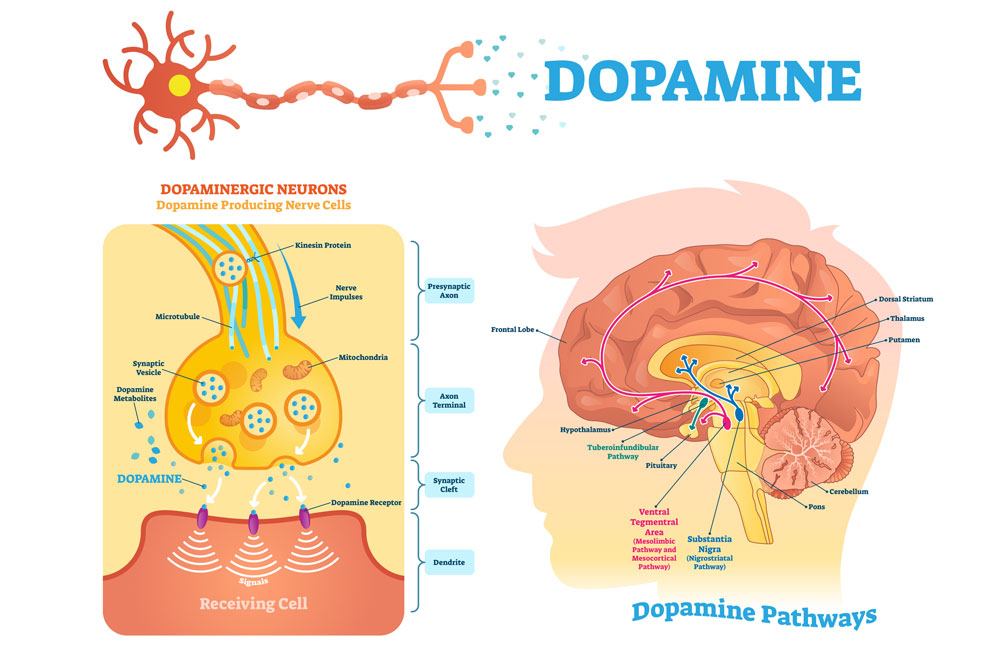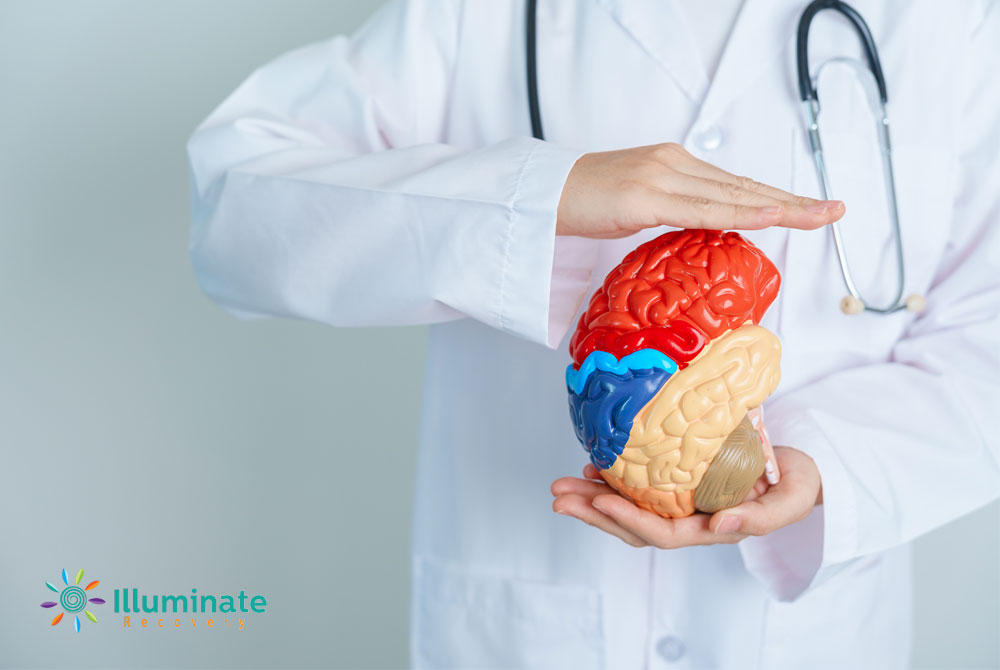As the field of substance use recovery and support continues to expand and be researched, more and more methods of healing the body and mind are being discovered and tested as serious and possible ways to help. One of those methods is neuroplasticity, which is the term for the brain’s ability to adapt, learn, and heal from traumatic injuries.
It’s something our brains can do naturally, but in substance use recovery support programs, the power of neuroplasty is being harnessed to make the recovery process easier. When it comes to understanding the link between neuroplasticity and addiction recovery, how neuroplasticity generally works, and how it can be used intentionally to help people heal from their substance usage, there’s a lot to explore.
Neuroplasticity and Addiction Recovery
Our bodies are shockingly adept when it comes to self-healing processes. While it was once believed that our brains were unable to heal themselves, that’s not actually true. Not all brain damage can be healed through neuroplasticity alone, but it’s a useful tool for recovering from injuries, which includes the use of substances.
Of all the amazing things our brains are capable of, neuroplasticity is especially interesting. In simple terms, it’s an ability to deal with damage by reorganizing and adapting to the situation and carrying on. When this ability is applied to substance use recovery strategies, it can do wonders to help someone overcome their trauma and move forward while also healing the brain from the damage it suffered.
The science behind neuroplasticity is well-documented, though the exact way it works is still being researched. What’s known is that it occurs in three phases, starting with the very first 48 hours after the traumatic injury takes place.

During the first phase, the brain switches over to secondary neural networks to keep functioning after the loss of other brain cells. This is an immediate response to the initial damage and is mainly just a way for the brain to continue to operate even after the injury. In phase two, the brain continues to heal for the next few weeks, connecting to new neural pathways. Phase three can take anywhere from a few more weeks to several months, and it occurs as the brain continues to reorganize and recover from the damage.
These phases show the main goal of neuroplasticity for the brain, which is to find ways to continue functioning, repair itself in ways that avoid the damaged areas, and make use of networks that were previously just there for support. The less substantial the damage, the faster it is for the brain to finish restructuring itself. However, even serious damage can be handled in time, especially if the patient is safe and recovering in other ways in the meantime.
Neuroplasticity also has core mechanisms that are important to understand.
These two mechanisms are:
- Neuro Regeneration – Also known as collateral sprouting, neuro regeneration is mostly contingent on synaptic plasticity, which is the brain making long-lasting changes to itself based on experiences the person goes through. This can occur from things such as exercise, repetition of tasks, and motivation, but also alcohol, illicit substances, and medication.
- Functional Reorganization – This is the brain’s ability to shift specific functions to non-damaged areas. This uses a mix of equipotentiality (the opposing side of the brain sustaining the functions of the damaged side) and vicariation (the ability of the brain to overtake undamaged areas with new functions).
Ultimately, neuroplasticity works by re-mapping functions after the brain has sustained an injury while also finding new pathways and working to recover from the damage. It is a way for the brain to continue functioning even when a part of it has been compromised by making use of undamaged areas.
Injuries Caused By Substance Use
Not all brain damage comes from physical injury. Prolonged, repeated substance use can be just as damaging as other forms of brain injury, and that’s because of the effect these substances can have on the neural pathways. The continued release of dopamine creates something of a one-way highway to the brain’s reward center that eventually only gets used when the substance is consumed. In the process, this usage can change our brain circuitry.

It’s important to note that each substance has unique effects.
For example, alcohol is known to have major impacts on brain function and cognitive functions in particular. Consistent alcohol use is linked to the inability to preserve memories gained after the drinking began, difficulty learning and processing new information, and trouble solving problems. Alcohol is also known to cause changes in brain shape, such as a shrinking cerebral cortex, which is where many cognitive functions are housed.
Cocaine, meanwhile, is just as harmful, but in different ways. Cocaine is one of the drugs proven to induce a buildup of dopamine, which over-activates dopamine receptor cells. Because of this, multiple regions of the brain are impacted. Most notably, cocaine becomes more pleasurable to your brain than essential substances like food and water and rewarding activities like exercise and hobbies due to the intense feelings associated with the drug. Cocaine can also impact cellular genetics, such as by expanding the nerve cells in the nucleus accumbens, which increases the reaction to cocaine even further.

When the brain is impacted by substances, everything from neurochemistry to cellular biology is at risk of being altered for the sake of cravings or neurotoxicity. These changes to the brain corrupt the way we think, the way we feel, the way we act, and the way our brain processes events around us. It’s a type of damage that occurs without suffering a physical injury, but the impact these substances have on us cannot be understated.
How Neuroplasticity Helps with Addiction Recovery
Substances damage the brain, and neuroplasticity is the process by which the brain attempts to recover by reorganizing itself and avoiding the damaged areas. Our ability to continue to function even after trauma is extremely valuable when it comes to substance use recovery, especially when it is helped along deliberately as part of a recovery and relapse prevention plan. The ability to recover from damage and avoid damaged areas in the future will make it much easier to reduce cravings while also helping the brain recover from other impacts of the drugs.
Avoiding Damage
The very goal of neuroplasticity is for the brain to adapt to and heal from being damaged by avoiding the damaged areas and re-routing which parts of the brain provide specific functions. This is a massive undertaking and a significant component of recovering from a substance use disorder. Fortunately, this recovery can be guided by therapy and planning.
This is the natural result of neuroplasticity, and it plays an important role in helping you recover. There’s no recovery if the brain continues to crave the substance or if the recovering user is still suffering from the often extreme mental and emotional impacts of SUD. The only way to truly stay on the path of recovery is to be able to escape from that damage and replace unhealthy coping mechanisms with healthier ones. Thus, the first step is allowing the brain to start reorganizing and adapting to the new situation.
Cognitive Behavioral Therapy
Cognitive behavioral therapy, also known as CBT, is often an essential component of recovering from a substance use disorder. It’s a therapy based on recognizing and avoiding or handling personal triggers and stressful real-world situations without resorting to substances.

Cognitive behavioral therapy, as a result, relies on neuroplasticity to make this goal a reality, literally re-shaping the brain to stop relying on substances and start relying on healthier habits and thought patterns to get through the day safely. In other words, by using cognitive behavioral therapy and understanding how neuroplasticity works for the process, it can be easier for a patient to access happier, healthier ways of thinking and responding to stress.
This works because a large part of neuroplasticity is experience-based changes. The more you repeat a pattern of behavior, the more it structures your brain to continue this behavior, creating a habit. Substance use is a harmful habit that’s fueled by the damage these substances cause. Conversely, healthy habits, such as meditation, breathing exercises, and positive self-talk, can have the opposite impact and train the brain to continue these healthy behaviors when faced with stress.
Contingency Management
Another way to influence a recovering brain’s neuroplasticity is to induce rewards for healthy behaviors. This “contingency management” strategy relies on making the brain associate positive actions with rewards and, thus, with a release of dopamine. This occurs much like how the drugs also release dopamine but in a less damaging and more easily monitored way. By offering specific and consistent rewards for staying in recovery, such as snacks, movie tickets, gift cards, and more, the brain will learn to follow positive patterns to continue getting these rewards.
Regarding reward responses and compulsive behaviors, it’s clear that the stronger the reward, the more the brain begins to crave the reward, which leads to compulsion and the neglect of necessities that aren’t as rewarding. This is the basis for how a substance dependency can form in the first place, but it is also something to keep in mind when using contingency management to induce positive changes in the brain.
Replacing such a strong craving with a lesser reward may seem impossible, but as the brain reorganizes itself away from the damage, it will open up new pathways that allow the new reward to have an impact. This impact will be a healthier alternative to the substance and can help people stay motivated and positive about their recovery journey.
Mindfulness-Based Relapse Prevention
One more way neuroplasticity can be used to prevent a relapse is through meditation and mindfulness practices. This mindfulness-based relapse prevention strategy uses mindfulness techniques to train the mind to have better responses to stress. This works because these mindfulness techniques are proven to have a positive effect on mood, focus, sleep, and self-image, all of which influence how the brain changes in response to making mindfulness a habit.

For example, meditation has been shown to have multiple impacts on the brain, including altering the way certain areas of the brain function, making it something of a healthy counterpart to the substances as it improves memory, attention, and self-regulation.This is a way of using neuroplasticity for self-improvement. By practicing meditation or other mindfulness techniques and therapies, you can teach yourself to use healthy coping mechanisms, and you can better understand and accept yourself, as well.
This may not seem like a significant component of recovery, but having good self-esteem and accepting any mistakes or flaws can help you avoid personal triggers, stay positive and motivated throughout the day, and pick yourself up if you fall – no substances required.
Seek Outpatient Addiction Treatment at Illuminate Recovery
Neuroplasticity is a natural, beneficial brain process that allows the brain to recover from and adapt to new situations. Without neuroplasticity, recovering from any brain injury would be much more difficult, and being able to form healthy habits would be near impossible. When it comes to substance use recovery programs, understanding the role neuroplasticity plays in helping us survive and thrive allows for better application of various therapies. More specifically, it can help you handle the corruption caused by the substance and allow you to have a happier, healthier future.
At Illuminate Recovery, we understand the importance of neuroplasticity, replacing harmful habits with healthy ones, and helping people to recover not just physically but mentally and emotionally. If you or a loved one are struggling with a substance use disorder, there’s no reason to wait – seek a Scottsdale, Arizona outpatient addiction treatment program. With our commitment to individualized treatments, education, skill building, and empathy for everyone who is suffering, you can trust us to use the methods that really work to help people stay on the path to recovery for years to come.
Sources:
- Puderbaugh, M., & Emmady, P. D. (2022, May 8). Neuroplasticity. PubMed; StatPearls Publishing. https://www.ncbi.nlm.nih.gov/books/NBK557811/
- Nestler, E. (2005). The Neurobiology of Cocaine Addiction. Science & Practice Perspectives, 3(1), 4–10. https://doi.org/10.1151/spp05314
- Evert, D. L., & Oscar-Berman, M. (1995). Alcohol-Related Cognitive Impairments. Alcohol Health and Research World, 19(2), 89–96. https://doi.org/10.1016/s0896-6273(02)00965-0″>https://doi.org/10.1016/s0896-6273(02)00965-0
- Wise, R. A. (2002). Brain Reward Circuitry. Neuron, 36(2), 229–240. https://doi.org/10.1016/s0896-6273(02)00965-0
- Mavrikaki, M. (2020, June 26). Brain plasticity in drug addiction: Burden and benefit. Harvard Health Blog. https://www.health.harvard.edu/blog/brain-plasticity-in-drug-addiction-burden-and-benefit-2020062620479

Having been on both sides of active addition, both the person using, and the person affected by a loved one using drugs and alcohol, Lucas has been involved in recovery since 2009. He has been working in the treatment industry since 2013. Using his personal experience and wealth of knowledge learned from professional development and immersion in the recovery field, he has spoken with thousands of families and helped hundreds of people attain long-term sobriety. In 2020, the opportunity presented to join in and start Illuminate Recovery. Understanding the importance of personalized treatment plans and the complex nature between substance abuse and co-occurring disorders, has helped Illuminate Recovery build a strong curriculum and a phenomenal staff. Illuminate Recovery now has a medical doctor who is board certified in addiction medicine and a psychiatric medical doctor who works side by side with independently licensed therapists to provide compassionate and effective treatment.

